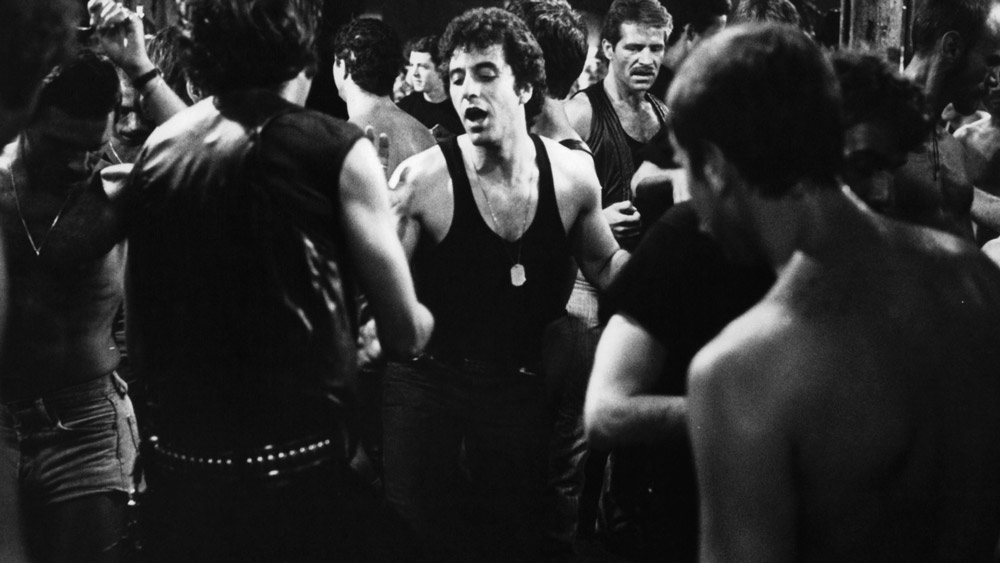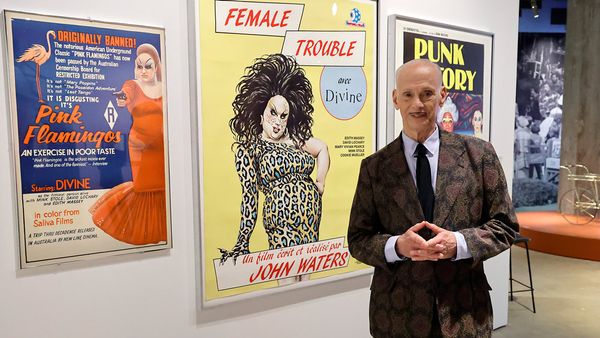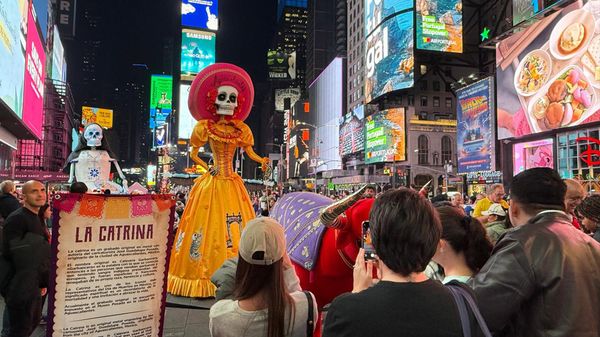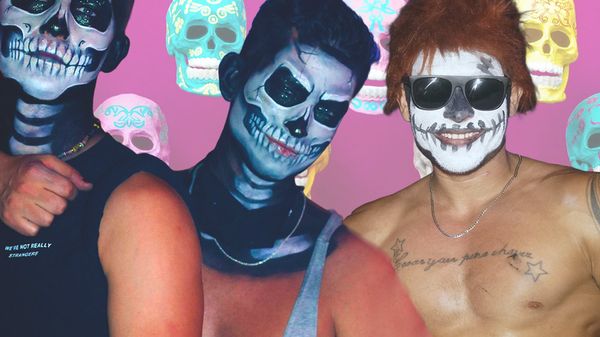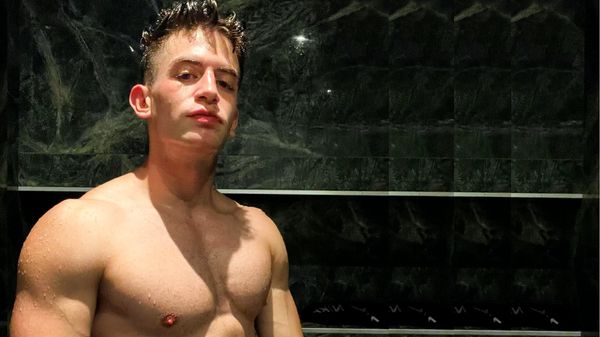
July 13, 2017
Sophie Calle, Missing in Plain Sight
Sura Wood READ TIME: 4 MIN.
The French conceptual artist and agent provocateur Sophie Calle has arranged for a private investigator to follow her, shadowed and photographed a man traveling through Venice, impersonated a stripper, invited a series of strangers to sleep in her bed so she could observe them, and interviewed people listed in a lost address book she found, and published her findings in a newspaper.
Calle's bravado, voyeurism, and penchant for violating boundaries and standards of appropriateness have brought celebrity and notoriety to a 40-year career characterized by risk, exhibitionism, intrusion, role-playing, a fondness for games, and a predilection for the wild side. "I thought you'd be in jail," she recalls her lawyer saying to her when she ran into him on a Paris street, gleefully adding that she'd "love to have a trial."
"Missing," now on view at Fort Mason, is the artist's largest exhibition in the U.S. to date. Curated by Evelyne Jouanno, founding director of Ars Citizen, it brings together four projects created since the 1980s that revolve around her preoccupation with loss and absence. The show, installed in three buildings on the waterfront site, could have been called "Inside the Mind of Sophie Calle." It's her ideas and unorthodox, some might say outrageous methods that are the main event. By her own admission, she's not an especially good photographer, but she is an adroit storyteller with a keen ear for the absurd that manifests in cool, sober, understated prose that can be mordantly funny. Describing her work doesn't adequately translate the experience of encountering it. There's no one quite like her.
While Ft. Mason's scenic beauty provides a cinematic backdrop for Calle's experiential art-form, the buildings don't add as much as one might think in the way of atmospherics. In fact, the tour de force that is "Take Care of Yourself," the exhibition's most successful and sure-to-be-talked-about section, is mounted in the conventional, albeit large, high-ceilinged Gallery 308. For the project, which debuted at the Venice Biennale in 2007, Calle contacted 107 women from different professions and invited them to perform, read aloud, comment on, analyze and otherwise interpret a break-up email she received from a former lover. Among the respondents: actresses, singers and dancers, a grammarian, a physicist, an 18th-century historian, a philosopher, a geisha, a mathematician, several lawyers, a clown with a bulbous nose and floppy hat, and a markswoman who shot the letter with three bullets from a distance of 15 meters. She didn't miss. Through videos, photographs and text, they deconstruct the self-justifying correspondence in inventive and deliciously amusing ways, forming a chorus of female solidarity, contempt, empathy and scathing humor. "It usually takes me 10 years to [formulate] an idea for a project; this one took me three days," Calle revealed during a recent talk.
The unedited responses, laid out on tables and stacked on top of each other on the walls, include a woman reading the letter to a naked female blow-up doll seated across the table from her; a film of a melodramatic Punch & Judy-style puppet show; and an analysis from a criminologist, who delivers the following conclusion: "He's an authentic manipulator, perverse, psychologically dangerous and/or a great writer. To be avoided at all costs."
But the prize goes to the sarcastic psychiatrist who notates her disdain next to the letter writer's offending sentences with comments like, "We don't care!," "The poor dear," and, "Hypocrite." When he laments that he would have liked things to have turned out differently, she retorts: "Yes, of course, blame it on Mom, the priest, the president, Madonna, Don Juan, the riots in the suburbs, and who knows what else."
A cluster of videos plays soundlessly on monitors surrounding a central screen with audio. It's frustrating if you're waiting for particular renditions to cycle up. In my case: Jeanne Moreau, Laurie Anderson, and French coloratura Natalie Dessay, belting out her version on a grand staircase.
The piece generates lively debate, its universal appeal evident in the chatter and raucous buzz the evening I visited. After all, who among us hasn't received a kiss-off from an unworthy, self-centered jerk? Calle says she was so excited about the project, "I was afraid he would come back." The unnamed "he" in the equation learned about it a year after it premiered but didn't interfere, though he has since penned an 1,800-page rejoinder for a book coming out in September. Evidently hell hath no word limit like a writer scorned.
Though Calle's oeuvre may seem a forerunner of the oversharing on social media, hers is a controlled, methodically staged, faux intimacy. She presents her pieces with clinical detachment, similar to a police report, which doesn't mean the origins of the material aren't deeply personal. "Rachel Monique," for example, is about the 2006 death of her mother. After learning she had three months to live, Calle installed a camera at the foot of her mother's deathbed to document the exact moment life fled her body. The resulting 11-minute video, "Couldn't Capture Death," is shown behind the altar in the Ft. Mason chapel, which appears set up for a funeral except for unusual features like the head and long, graceful neck of a stuffed giraffe, protruding from a side wall and looking down on the proceedings with doleful eyes. Framed and posted around the space are tart entries from Monique's diaries, such as, "I didn't give you much and you returned the compliment"; Calle's account of transporting Monique's diamond ring to an iceberg at the North Pole; and a memory of a morning they spent together when her mother abruptly stopped in front of a hotel and told her to shut up. "Silence," she said. "This is where I lost my virginity."
Unlike her gregarious mother, Calle's late father, a doctor, Pop Art collector and very private man, will not be addressed overtly in her art. "When he died, I was lost," she says. "His were the first eyes to judge my work. I thought without his eyes, I should stop being an artist." Fortunately there's no danger of that happening any time soon. Her next project: Men hunting for women.
Through Aug. 20. fortmason.org. "Sophie Calle: My mother, my cat, my father, in that order," a concurrent photography exhibition at FraenkelLAB, runs through Aug. 26. fraenkelgallery.com.
